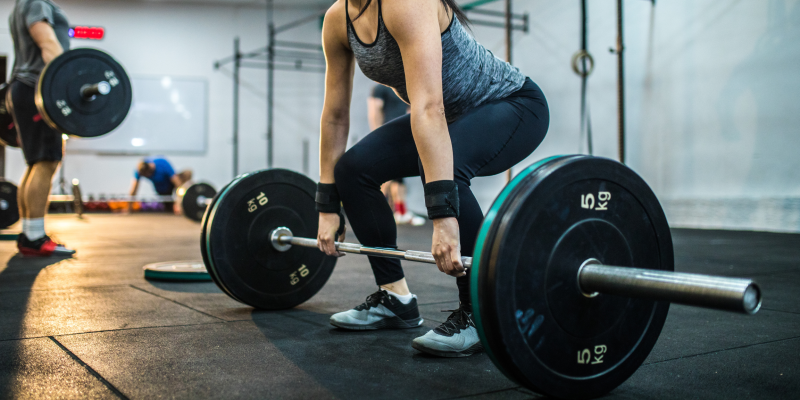The importance of strength training for runners cannot be overstated. There is a belief amongst the running community that that if runners lift a weight, they will put on unnecessary muscle bulk which will negatively impact their running economy. On the other side, strength training has been shown to have massive improvements in running economy and reducing injury risk. Whether you’re preparing for a marathon or are training for a 5km fun run, these exercises should be part of your weekly routine.
A review in the British Journal of Sports medicine in October 2013 examined all the research regarding injury prevention in sports. Over 25,000 runners with 3464 injuries were analyzed, looking specifically at the effects stretching, strengthening and balance exercises have on reducing injury.
The most interesting finding was that strengthening exercises could reduce overuse injuries – which marathon runners are most aware of – by nearly 50%. However, It didn’t find any noticeable effect for stretching, but balance and proprioception exercises were beneficial in reducing injuries occurring.
Another study highlighted, strength training programs including low to high-intensity resistance exercises and plyometric exercises performed 2-3 times per week for 8-12 weeks is an appropriate strategy to improve the running economy in long-distance runners. (Read more).
Squat
A squat is one of the most simple exercises that you could do at home. It does not only strengthen your quads and your glutes muscles, but it also challenges your core. Stand with your head facing forward and your chest held up and out. Place your feet shoulder-width apart or slightly wider, sit back on your hip like you’re sitting into an imaginary chair. Your knees can move over your ankles if you wish so. Repeat this exercise for 3 sets of 10 to 15 repetitions.
Forward Lunges
A lunge is a single–leg bodyweight exercise that works your hips, glutes, quads, hamstrings, and core and the hard-to-reach muscles of your inner thighs. It is a great exercise for runners since they are recruiting those muscles while running.
Stand tall with feet hip-width apart. Take a big step forward with the right leg. Start to shift your weight forward so heel hits the floor first. Lower your body until the right thigh is parallel to the floor and the right shin is vertical. It’s OK if knee shifts forward as long as it doesn’t go past right toe. If mobility allows, lightly tap left knee to the floor while keeping weight in right heel. Press into the right heel to drive back up to starting position. Repeat on the other side. Try this routine for 3 sets of 8 repetitions with each leg.
Calf raises – with a straight knee and knee bended
The calf’s muscles consist of 2 muscles Gastrocnemius and Soleus. The gastrocnemius is plantar flexing the foot while running, however, the soleus muscle (lower half of the calf) takes up to 6x your body weight with every step when running. Due to the attachment of these 2 muscles, you have to train them in the straight knee calf raises (Mostly Gastrocnemius) and knee bent calf raises (Soleus).
Exercises don’t come much simpler than the calf raise. Raise up for 1 second, and take 3 seconds to lower down. Start with a double leg and progress to a single leg. Perform both with a straight knee and a bent knee for 3 sets of 12 to 15 repetitions.
Glute Bridges
This exercise targets the glute max and hamstring muscles. The glute max is a massive power generator, used to extend the hip and Hamstrings are also used to extend the hip.
Lie on your back with feet flat against the floor and knees bent. Squeeze your glutes and lift your hips off of the floor in 1 sec until your body forms a straight line from your knees to your shoulders. Pause at the top, then lower back down to the starting position in 3 sec. Start with a double leg and progress to a single leg. Repeat this exercise for 3 sets of 12 to 15 repetitions.
Before trying these exercises make sure to consult your strength coach or your physical therapist. If you have any question feel free to contact us through [email protected]
Our Approach
Dublin Sports Injury Clinic is a physical therapy clinic based in Fitzwilliam Square, Dublin2. We have a holistic approach to our assessment and treatment. The initial assessment helps us to explore the cause of your injury and help you to get pain free shortly and stop any further injuries. We will design a customized training program for you to start with, and we will coach you and monitor your progress closely. We will prescribe relative rest or modified activities as required. Depending on the individual requirement, we apply manual therapy accompanied by stretching to restore tissue elasticity and reduce the strain in the muscle-tendon unit with joint motion.
FOLLOW US ON YOUTUBE AND GET ACCESS TO OUR WEEKLY FREE REHABILITATION EXERCISES.
Next step
Want to get in touch with our team of a therapist or you are looking for some advice? Simply fill in your details below & we get in touch with you shortly.
Disclaimer: This article is for information only and should not be used for the diagnosis or treatment of medical conditions. You can contact us if you would like to book an appointment or get some advice from our therapist.

